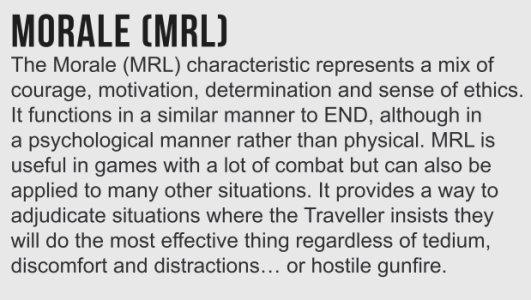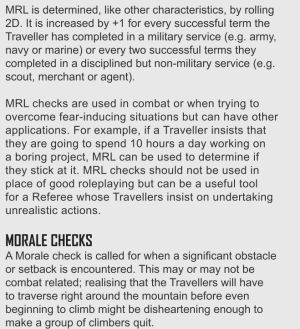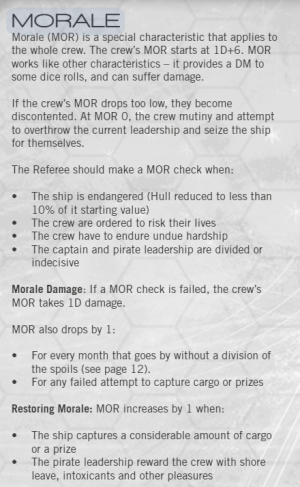Bryn the 2300AD guy
Cosmic Mongoose
Dungeons and Dragons originated as a wargame.
That what Gygax would have had you believe, because his contribution was the "Chainmail" wargame rules. However, original D&D contained alternative combat rules (which became D&D combat) whilst recommending you also buy Chainmail. D&D was really the product of Dave Arneson's mind, and Blackmoor was the orginal setting.
The military aspect of 2300AD wasn't that huge until Invasion. Most of the modules were focused on adventures on interesting new worlds, and the Kafers were a bogieman who often acted as a catalyst. For example, shooting down ISV-5 in Energy Curve. Look at the pre-cyberpunk adventures:
- Beanstalk, the Tricolor's Shadow and Trading Scheme (small adventure in the 1st ed. to introduce the Pentapods): an interesting new planet with many possible adventures. The Kafers sole appearance is as the unknown alien spaceship shot down in the Tricolor's Shadow (a Kafer scout).
- Energy Curve: a survival adventure with first contact with a new primative species (the Klaxun). The Kafers are the catalyst in shooting them down and providing a threat forcing the players away from the crash site (although the Kafers do not land).
- Nyotekundu: an adventure set on a deep space mining platform, involving a crewmember going mad. No Kafers.
- Kafer Dawn & Aurore SB: an extremely well described alien world and adventures on it involving the Kafers, but not in the military sense.
- Ranger: another well described alien world with a new alien race.
- Mission Arcturus: the one module where the players are military or military-adjacent. Describes Station Arcture etc.
- Bayern: a procedural adventure based on a long-range exploration ship
Invasion, as put out by GDW, basically gave a background and recommended the players be the crew of a merchant ship or privateer trying to operate on the wartorn French Arm.
Gavin Dady's Nous Voila adventure might be a return to form. Fingers crossed.




